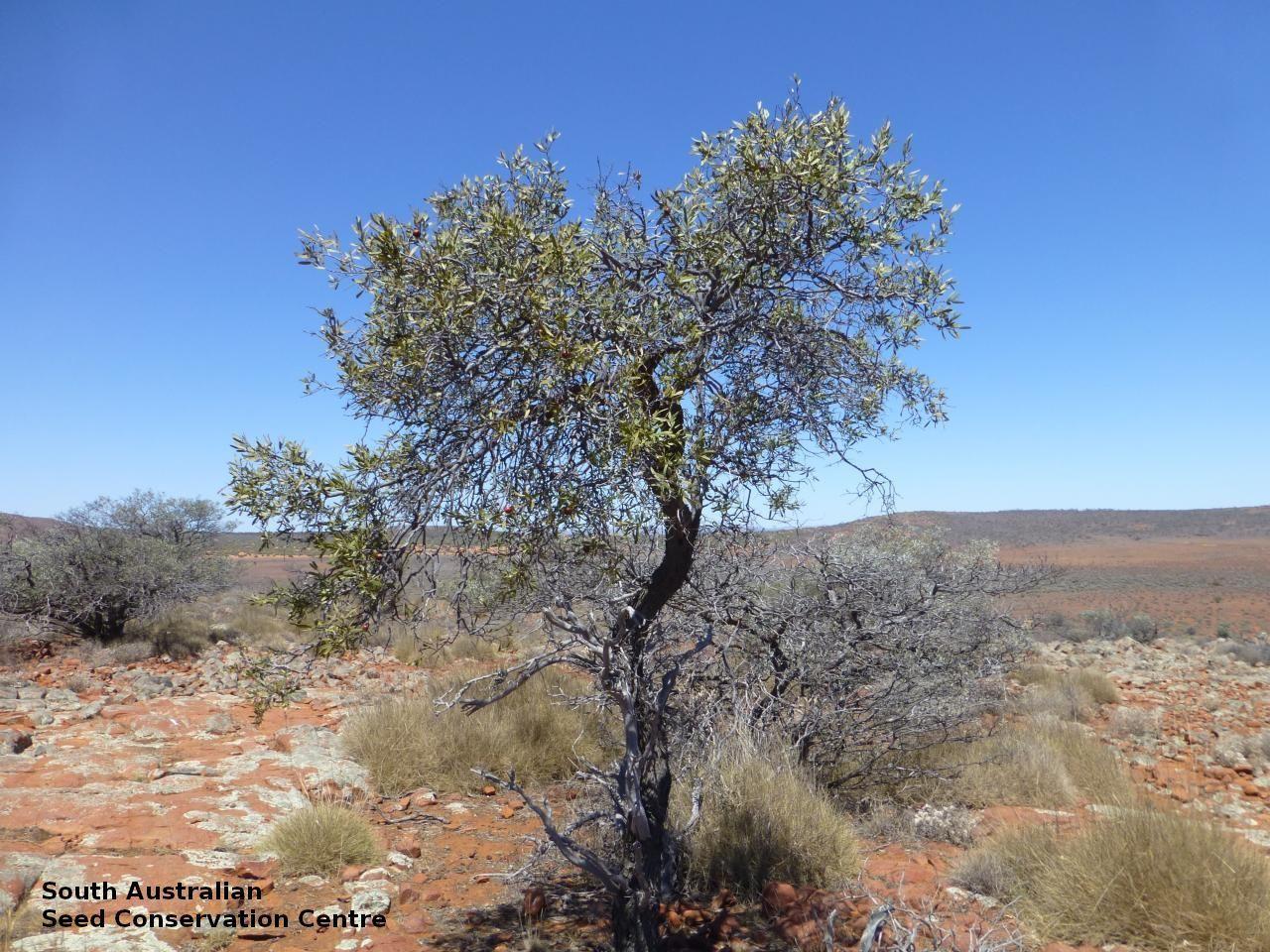
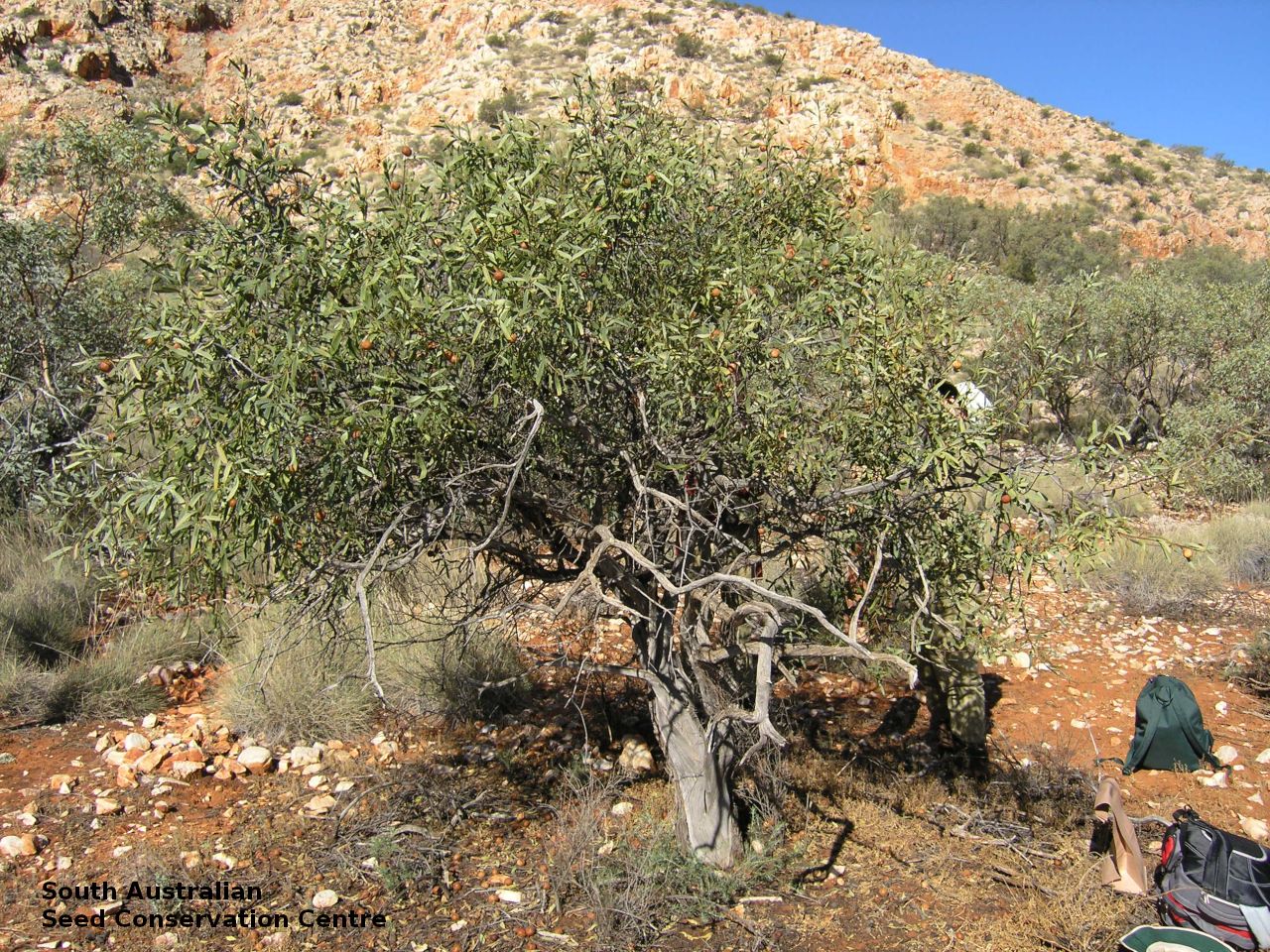
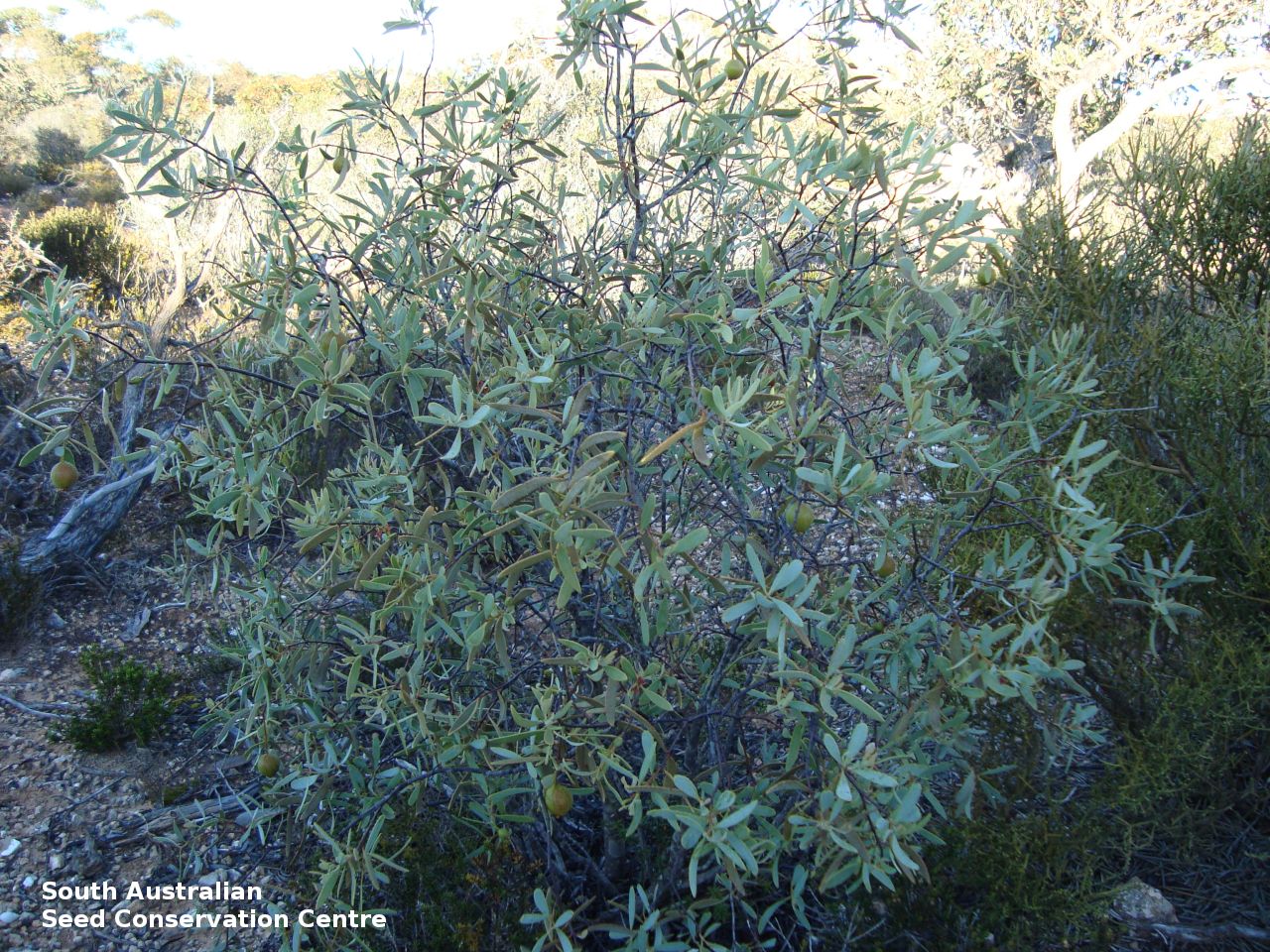
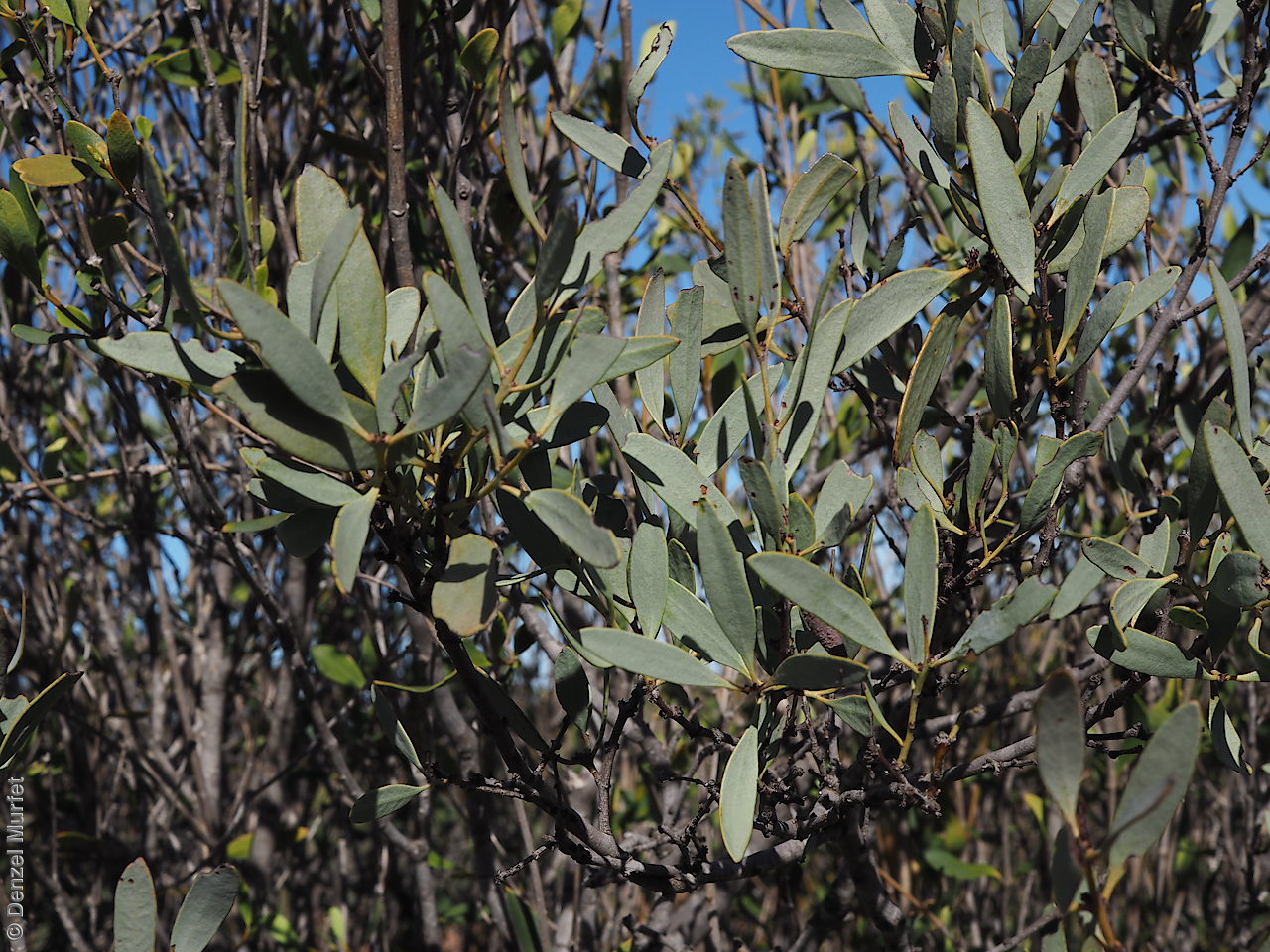
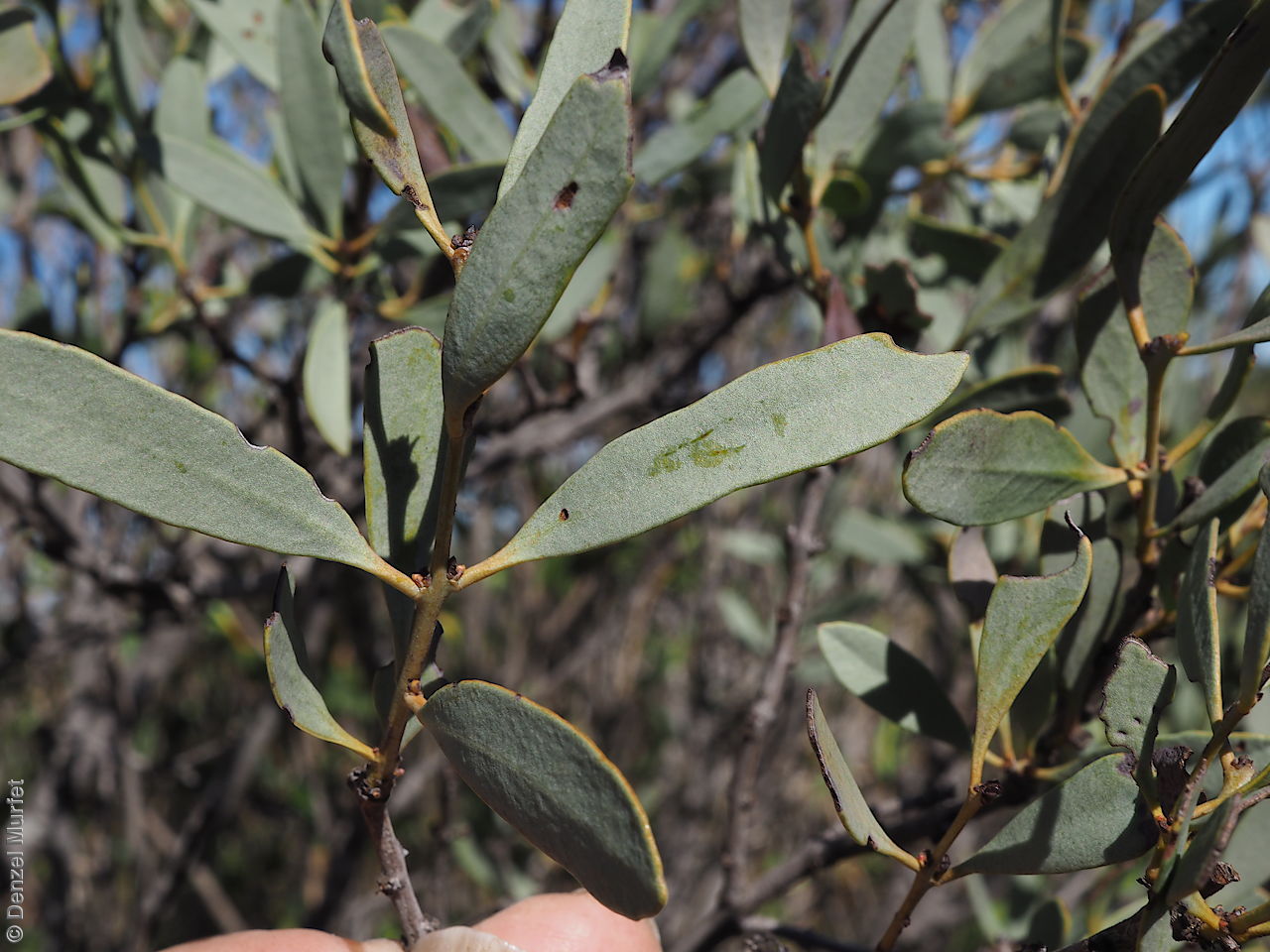
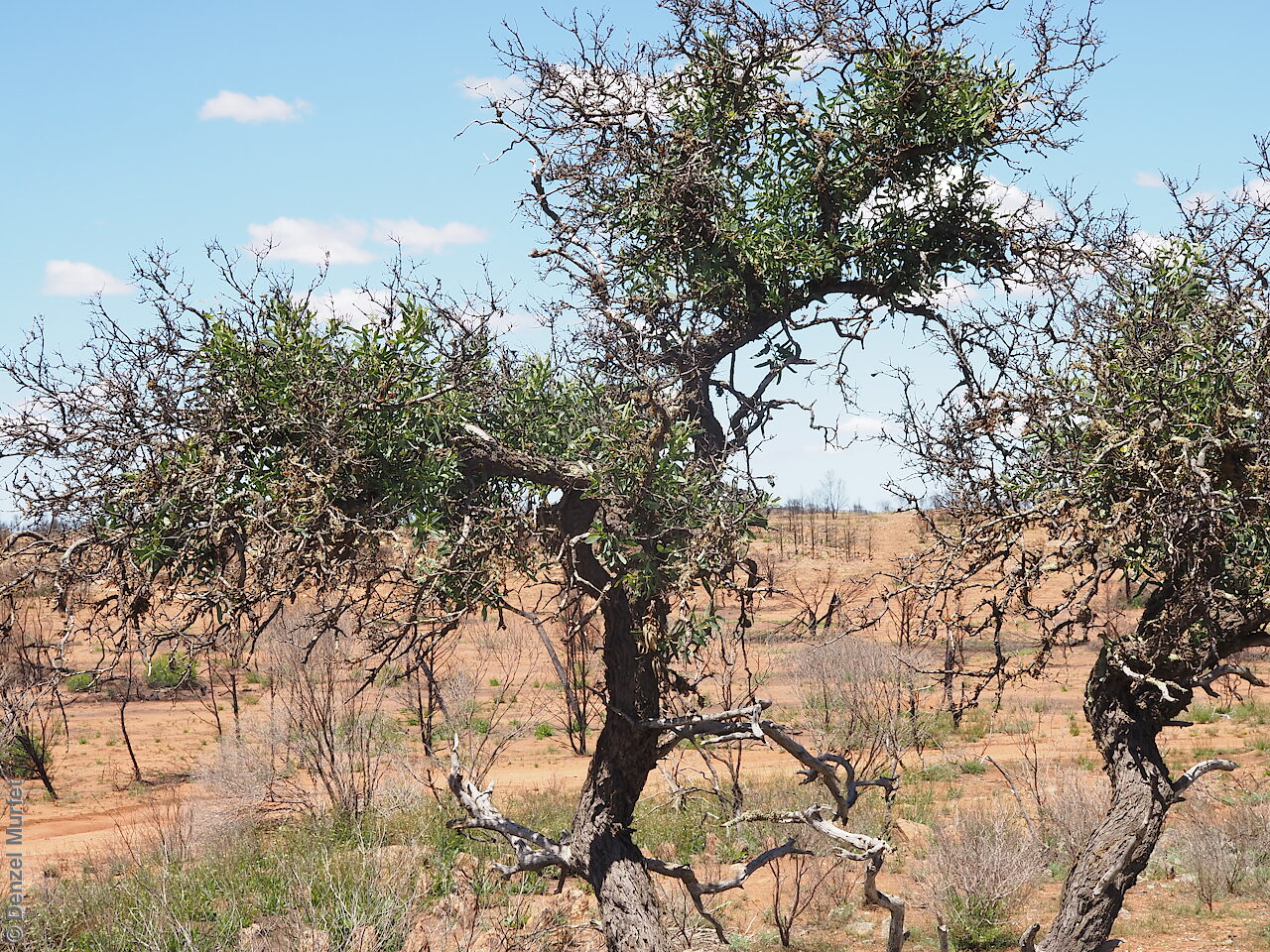
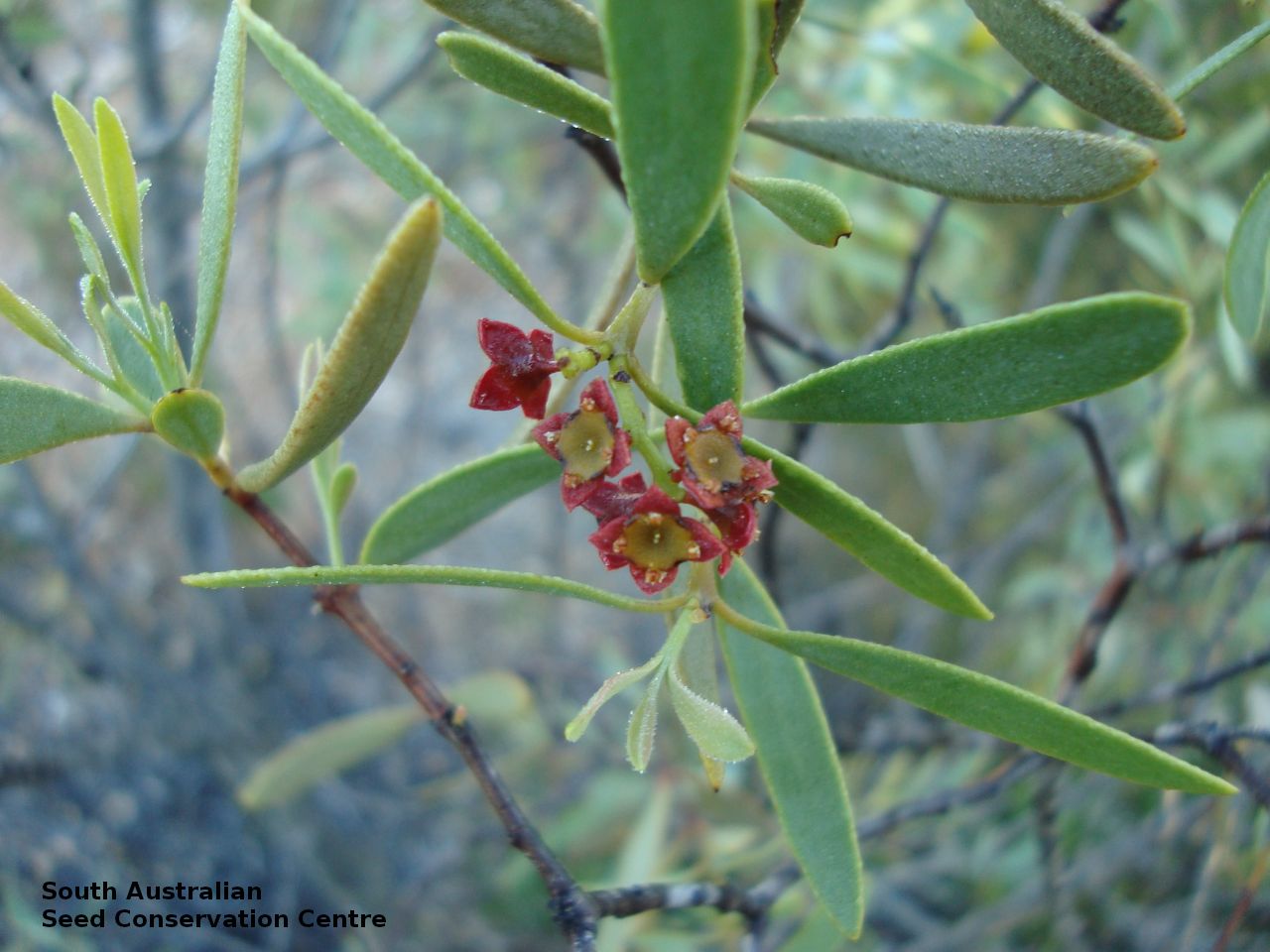
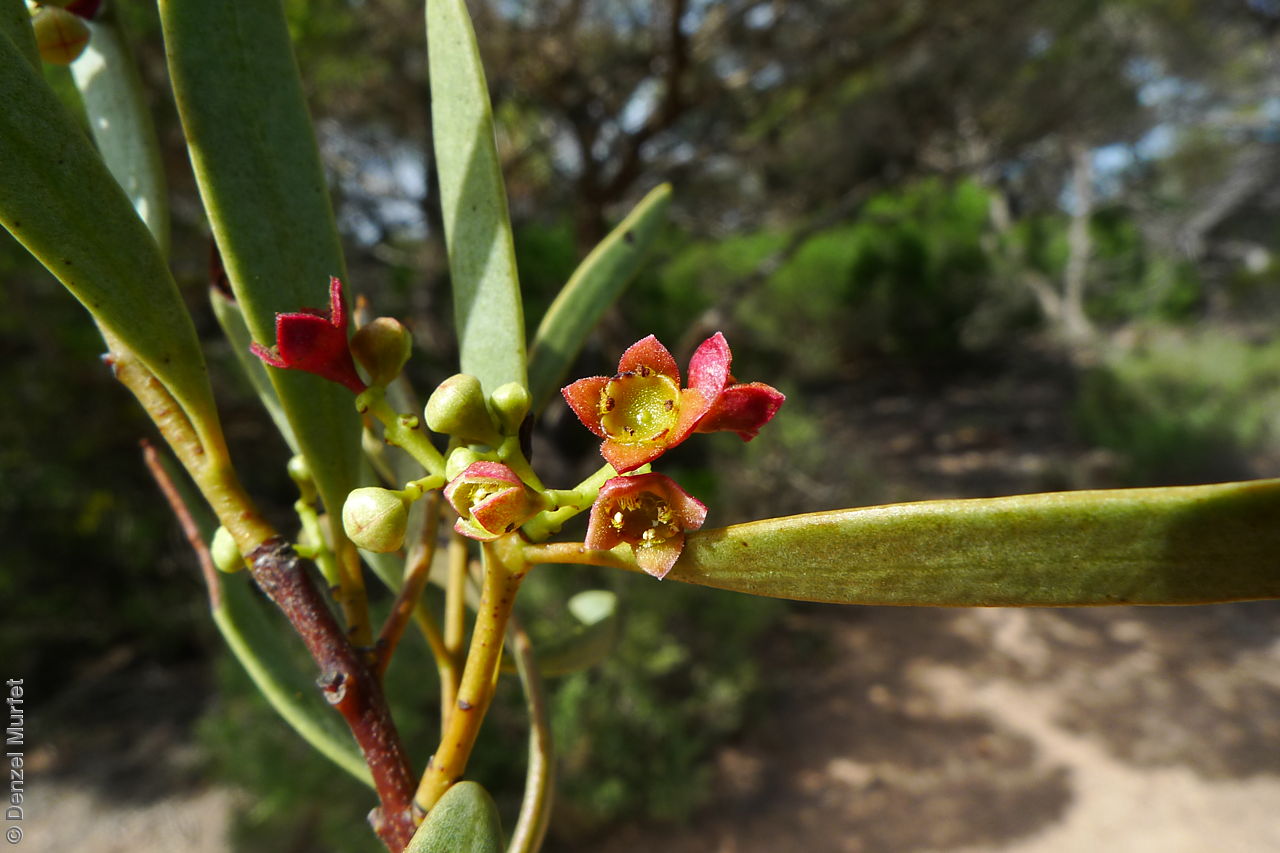
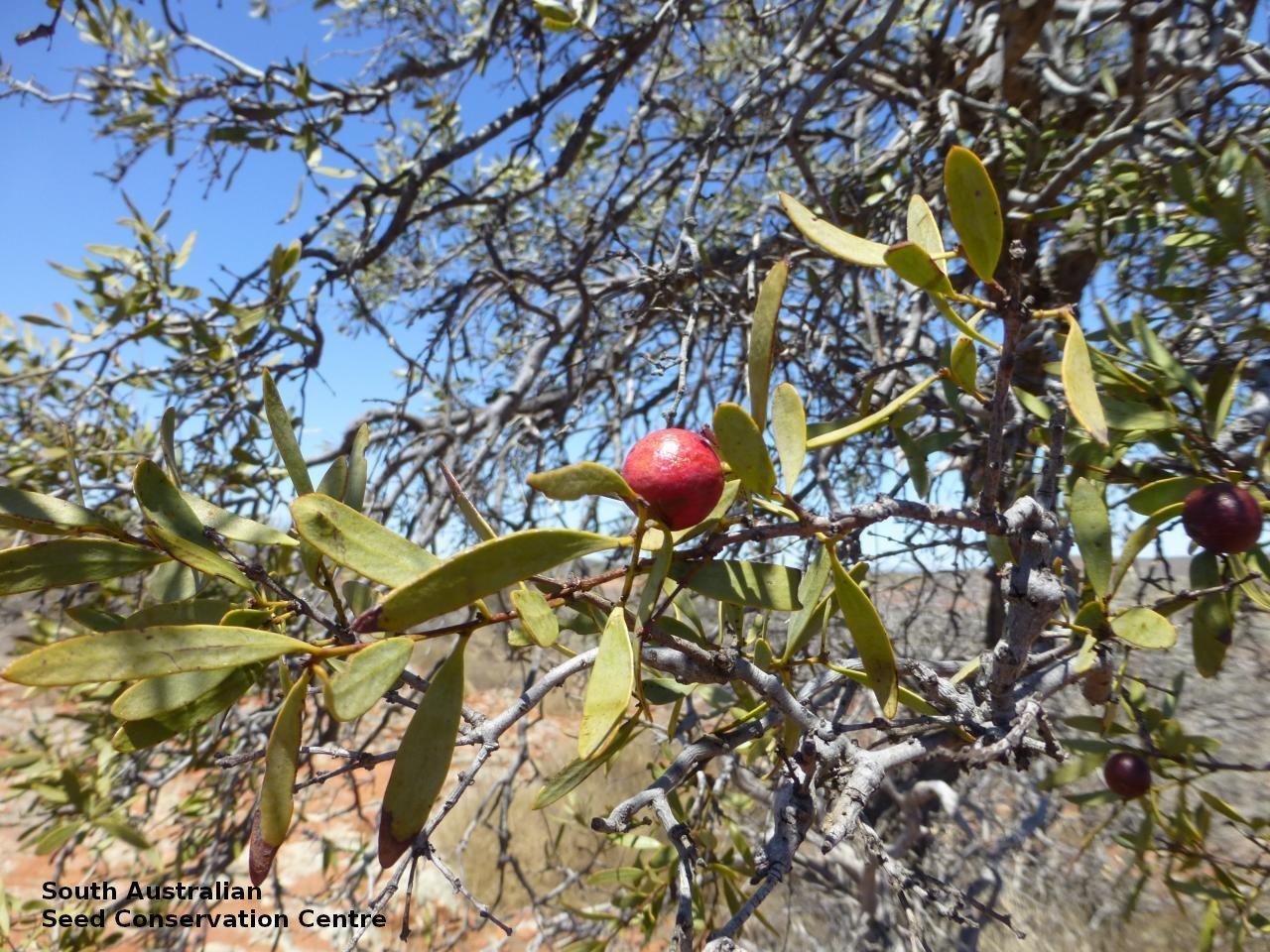
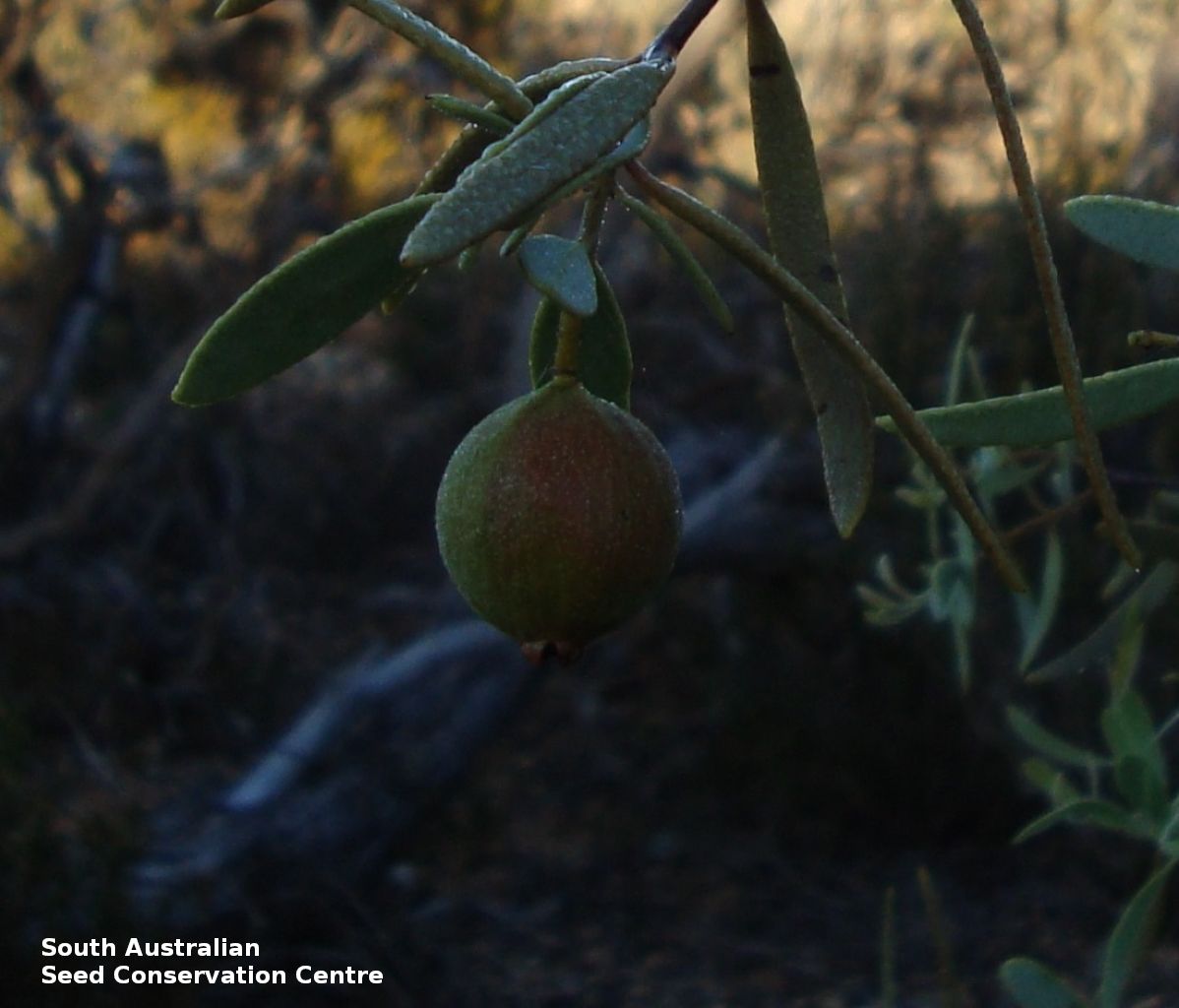
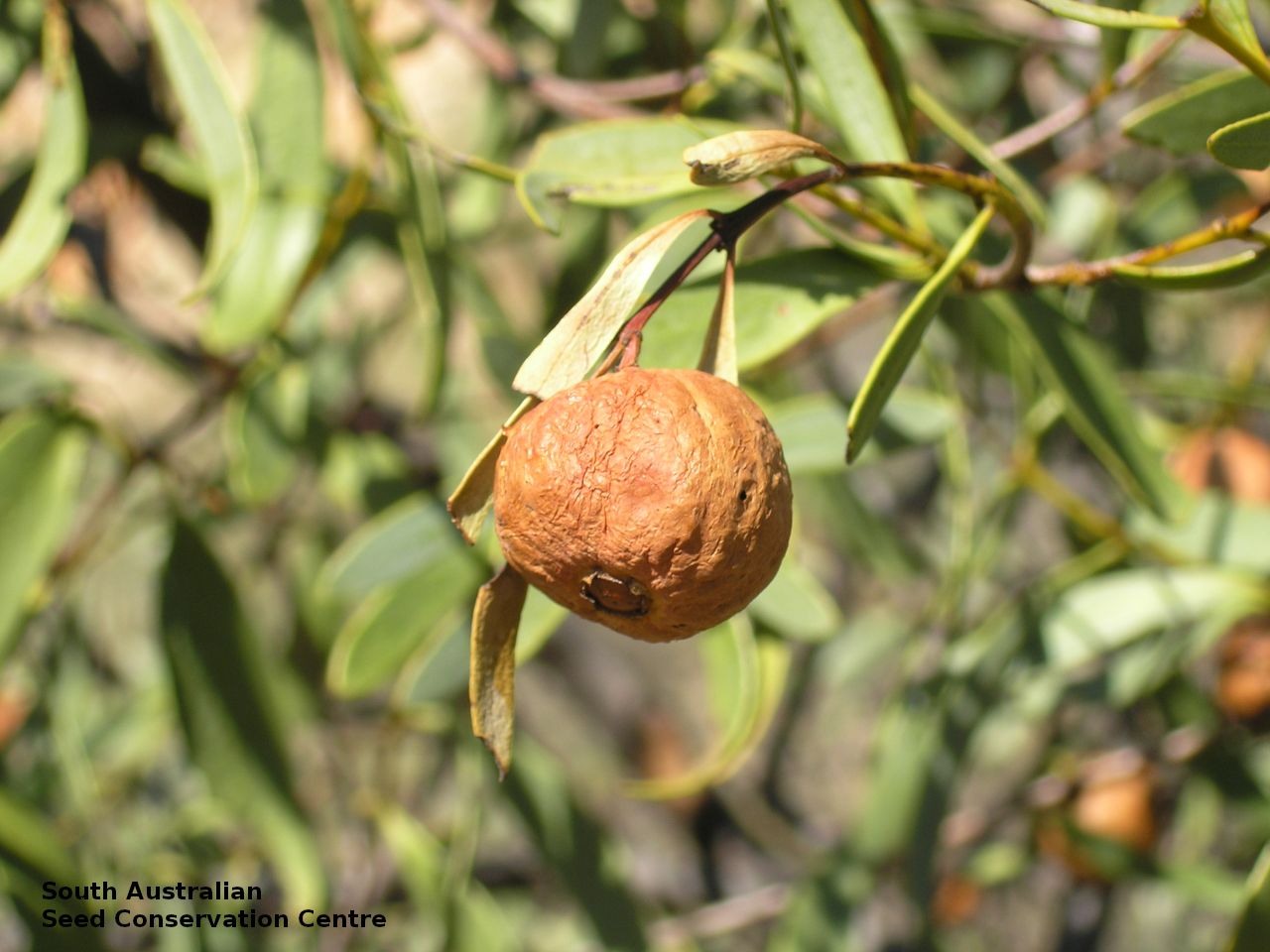
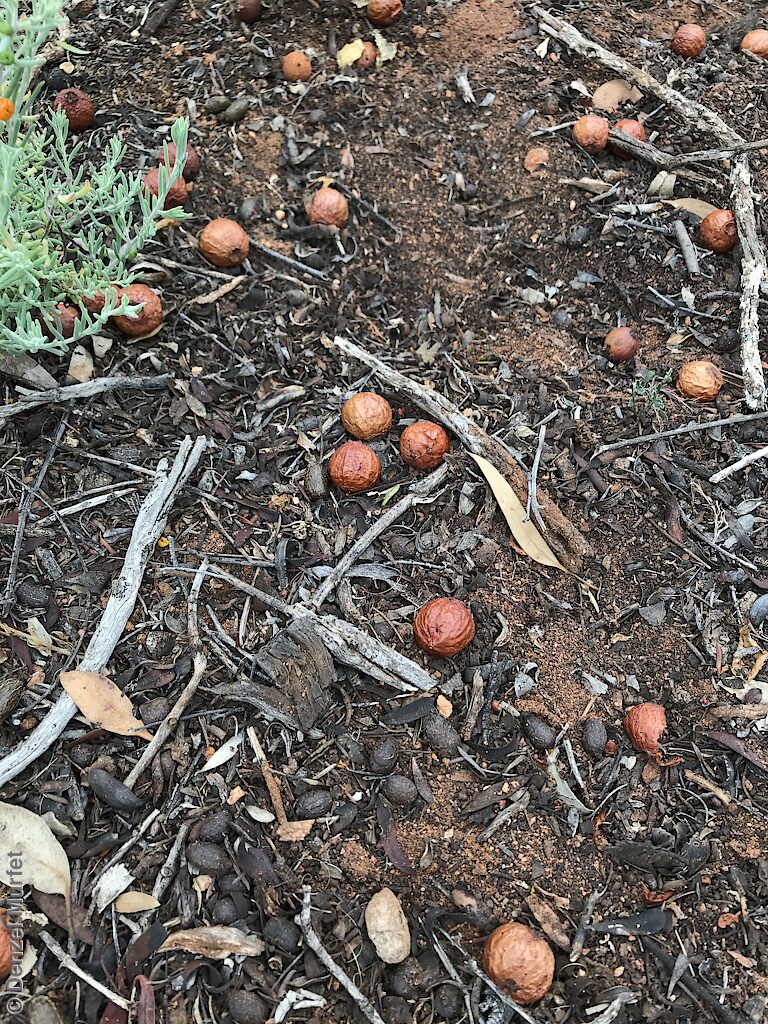
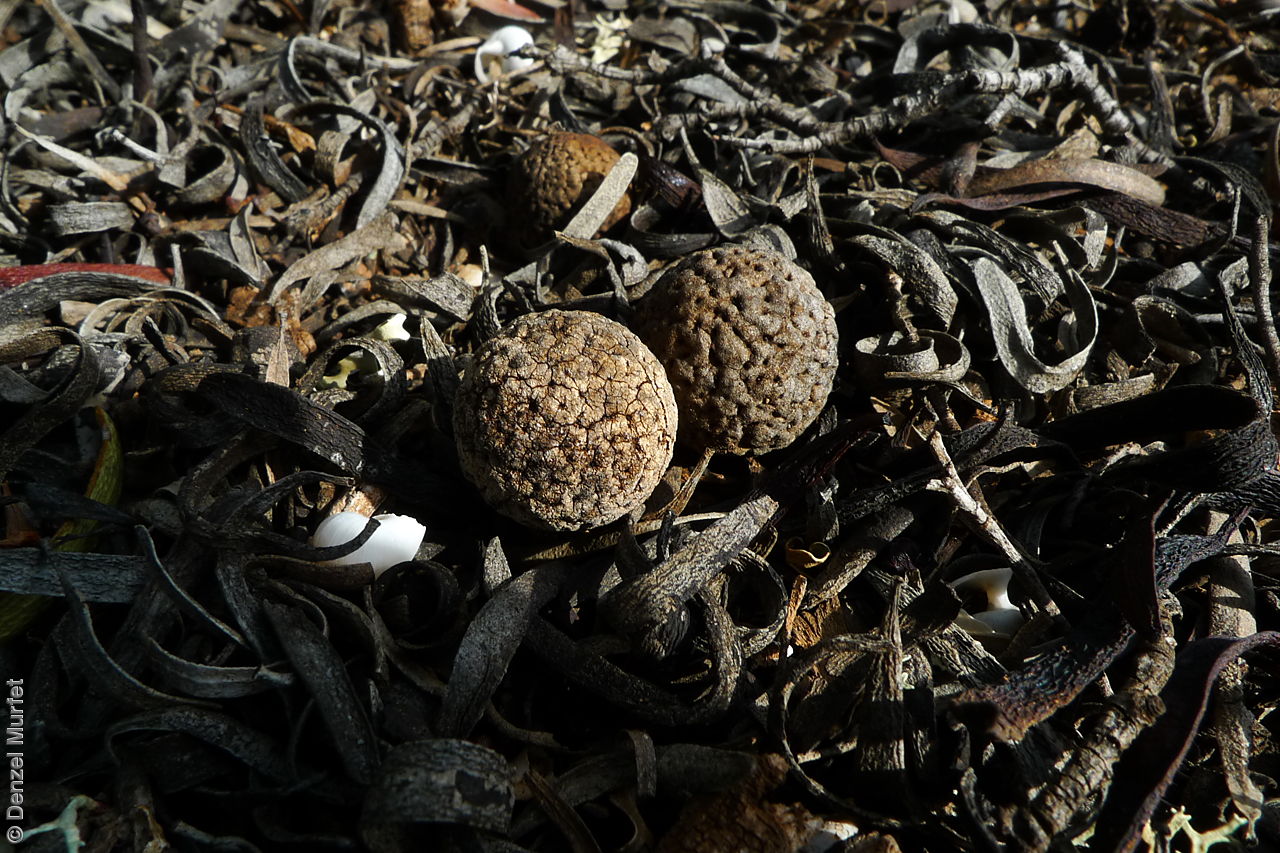
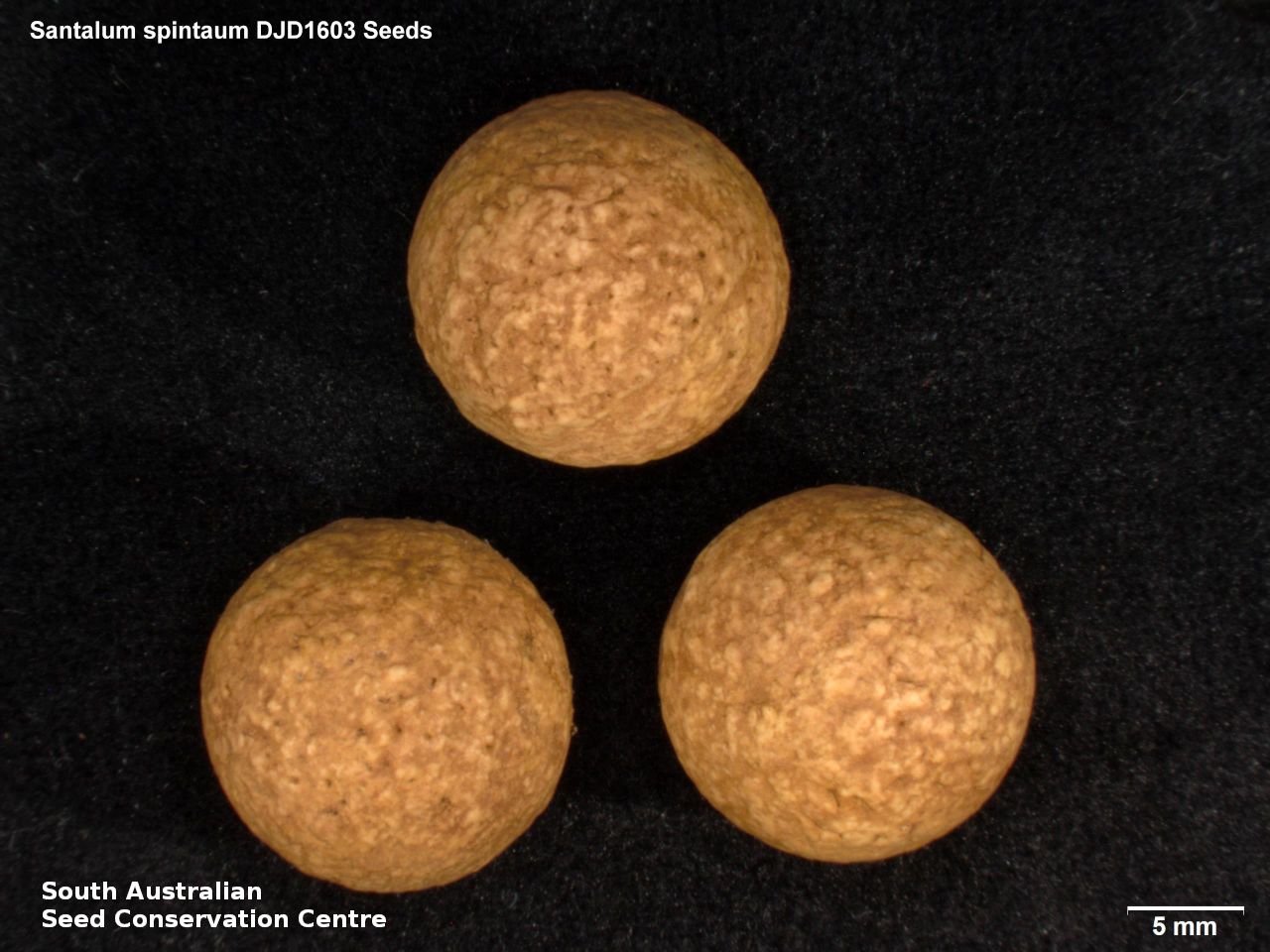
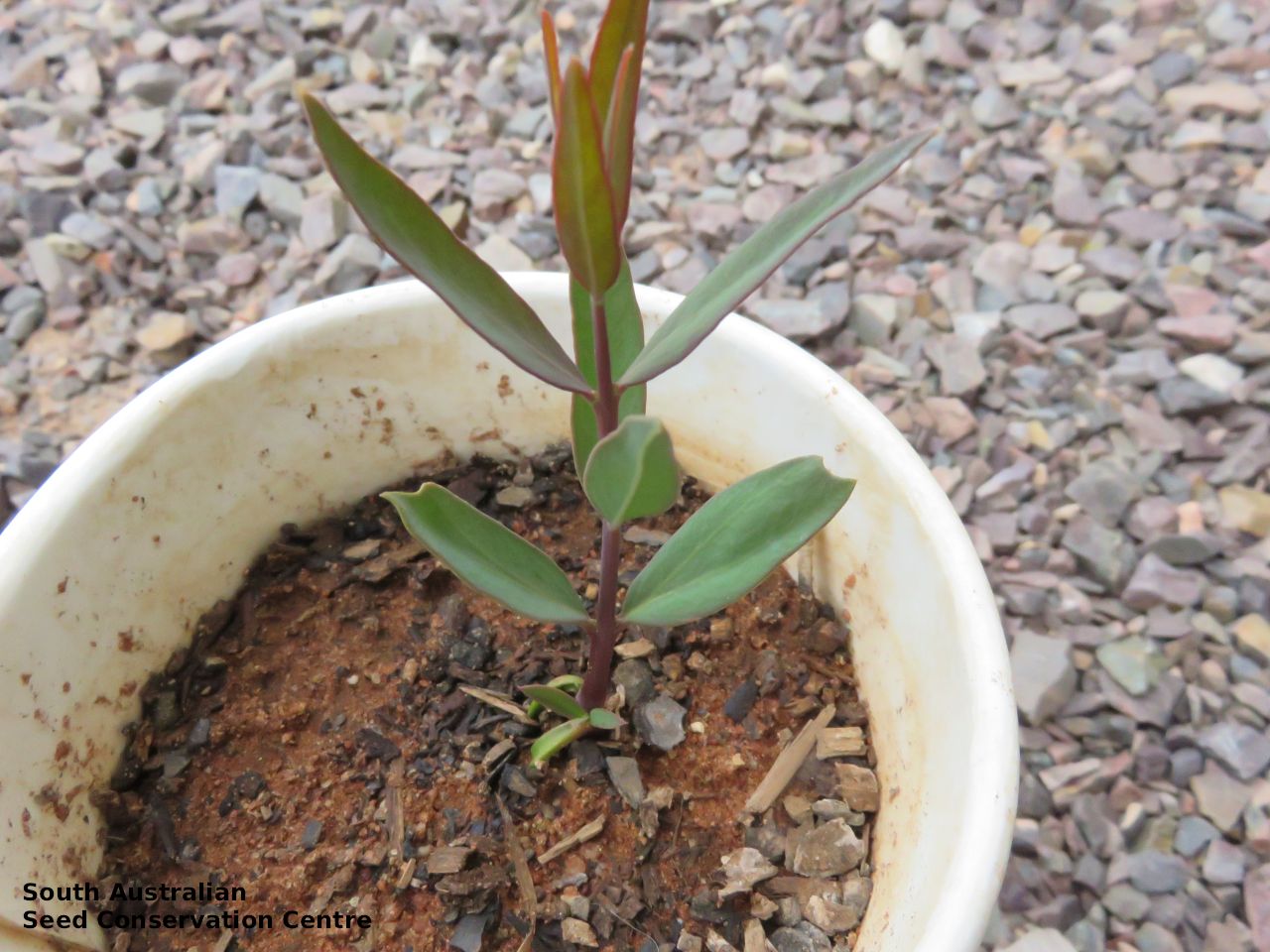

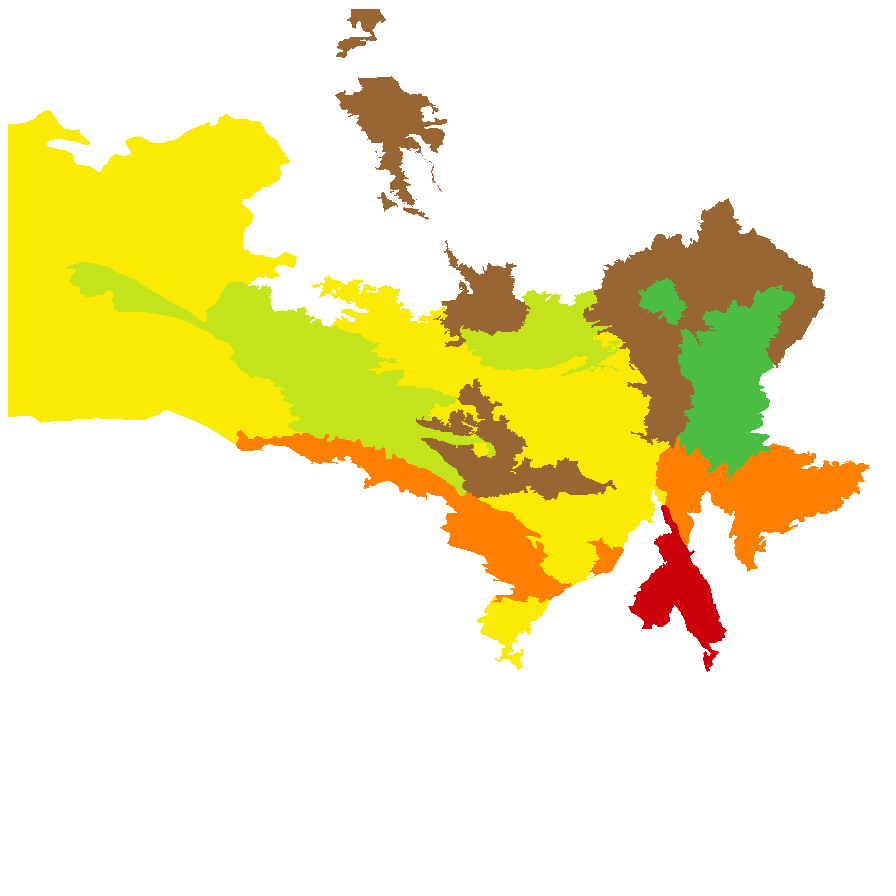
Botanical art
Prior names
Mida spicata
Santalum cygnorum
Fusanus spicatus
Eucarya spicata
Common names
Sandalwood
Australian Sandalwood
Etymology
Santalum from the Greek 'santalon', which is derived from the Sanskrit 'chandana' meaning fragrant, named for the Indian sandalwood. Spicatum from the Latin 'spica' meaning a spike.
Distribution and status
Found scattered across the central region of South Australia. Also occurs in Western Australia. Native. Rare in South Australia. Uncommon in Western Australia.
Herbarium regions: North Western, Lake Eyre, Nullarbor, Gairdner-Torrens, Flinders Ranges, Eastern, Eyre Peninsula, Northern Lofty
NRM regions: Alinytjara Wilurara, Eyre Peninsula, Northern and Yorke, South Australian Arid Lands
AVH map: SA distribution map (external link)
Plant description
Tall shrub to 5 m high and semi-parasitic on other plants. Leaves are leathery and dark green in pairs. Flowers are green in pyramid clusters at the terminal of stems. Flowering can occur all year round but mainly in autumn and winter. Fruits are large round fruit with a yellow to red-brown thin fleshy outer layer. Seeds are large woody round seeds to 2 cm diameter with scattered shallow pit across the seedcoat.
Seed collection and propagation
Collect seeds between January and December. Fruits can be collected off the plant or from the ground below the plant. Collect fruits that have a yellow to red flesh and a hard seed in side. Place the fruit in a tray and leave to dry for 3-4 weeks, except for those collected from the ground with flesh that has already dried. Then rub the fruit with your hands and the flesh should crumble. Use a sieve to separate the unwanted material. Store the seeds with a desiccant such as dried silica beads or dry rice, in an air tight container in a cool and dry place. From three collections, the seed viability were average to high, ranging from 56% to 100%. This species has physiological dormancy that need to be overcome for the seed to germinate (e.g. nicking the seed coat)
| Location | No. of seeds (weight grams) | Number of plants | Date collected | Collection number Collection location | Date stored | % Viability | Storage temperature |
|---|---|---|---|---|---|---|---|
| BGA | 11 (21.7 g) | 24-Mar-2004 | K.Bellchambers Flinders Ranges | 1-Oct-2004 | N/C | -18°C | |
| BGA MSB | 1,400 (2976 g) 1,400 (2976 g) | 60 | 28-Oct-2004 | MOL4636 Gairdner-Torrens | 28-Mar-2006 | 56% | -18°C |
| BGA | 650 (1644.15 g) | 12 | 6-Nov-2008 | DJD1358 Northern Lofty | 20-Jul-2009 | 100% | -18°C |
| BGA | 670 (1405.23 g) | 6 | 4-Nov-2009 | DJD1603 Nullarbor | 1-Jun-2010 | 100% | -18°C |
| BGA | 3,400 (8721.250 g) | 30+ | 17-Oct-2022 | DJD4126 Eyre Peninsula | 20-Jun-2023 | 100% | -18°C |
Number of plants: This is the number of plants from which the seeds were collected.
Collection location: The Herbarium of South Australia's region name.
% Viability: Percentage of filled healthy seeds determined by a cut test or x-ray.